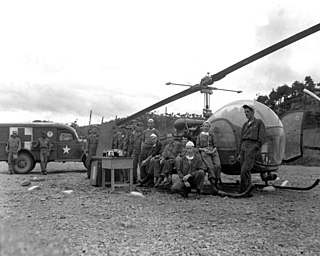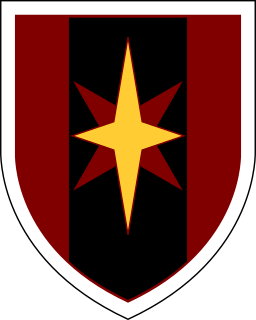
Mobile Army Surgical Hospitals were U.S. Army field hospital units conceptualized in 1946 as replacements for the World War II-era Auxiliary Surgical Group hospital units, which had become obsolete. MASH Units were in operation from the Korean War to the Gulf War before being phased out in the early 2000s. Each MASH unit had 60 beds, as well as surgical, nursing, and other enlisted and officer staff available at all times. MASH units filled a vital role in military medicine by providing support to army units upwards of 10,000 to 20,000 soldiers. These units had a low mortality rate compared to others, as the transportation time to hospitals was shorter, resulting in fewer patients dying within the "Golden Hour", the first hour after an injury is first sustained, which is referred to in trauma as the most important hour. The term was made famous in the novel, movie, and television series M*A*S*H, which depicted a fictional MASH unit. The U.S. Army deactivated the last MASH unit on February 16, 2006. The successor to the Mobile Army Surgical Hospital is the Combat Support Hospital.

An inflatable boat is a lightweight boat constructed with its sides and bow made of flexible tubes containing pressurised gas. For smaller boats, the floor and hull is often flexible, while for boats longer than 3 metres (9.8 ft), the floor typically consists of three to five rigid plywood or aluminium sheets fixed between the tubes, but not joined rigidly together. Often the transom is rigid, providing a location and structure for mounting an outboard motor.

A combat support hospital is a type of modern United States Army field hospital. The CSH is transportable by aircraft and trucks and is normally delivered to the Corps Support Area in standard military-owned demountable containers (MILVAN) cargo containers. Once transported, it is assembled by the staff into a tent hospital to treat patients. Depending upon the operational environment, a CSH might also treat civilians and wounded enemy soldiers. The CSH is the successor to the mobile army surgical hospital.

In the Vietnam War, the Mobile Riverine Force (MRF), initially designated Mekong Delta Mobile Afloat Force, and later the Riverines, were a joint US Army and US Navy force that comprised a substantial part of the brown-water navy. It was modeled after lessons learned by the French experience in the First Indochina War of Dinassaut and had the task of both transport and combat. The primary base was at Đồng Tâm Base Camp, with a floating base at the base of the Mekong River. It played a key role in the Tet Offensive.

A field hospital is a temporary hospital or mobile medical unit that takes care of casualties on-site before they can be safely transported to more permanent facilities. This term was initially used in military medicine, but it has also been used to describe alternate care sites used in disasters and other emergency situations.
The Lifeline Express, or Jeevan Rekha Express, is a hospital train that runs in India that started running on 16 July 1991. It was a collaboration between the Impact India Foundation (IIF), Indian Railways (IR) and the Health Ministry. The train is funded by IIF, international charitable sources, Indian corporations and individuals. The train has made a health impact both in India, as well as around the world where it has inspired similar initiatives.
Medical gas supply systems in hospitals and other healthcare facilities are utilized to supply specialized gases and gas mixtures to various parts of the facility. Products handled by such systems typically include:

The 3rd Marine Logistics Group is the Logistics Combat Element (LCE) for III Marine Expeditionary Force currently headquartered on Camp Kinser, Marine Corps Base Smedley D. Butler, Okinawa, Japan. 3rd MLG provides combat service support (CSS) to III MEF units above the organic capability. CSS is the essential capabilities, functions, activities, and tasks necessary to sustain all elements of operating forces in theater at all levels of war. Combat service support includes, but is not limited, to supply, maintenance, transportation, general engineering, health services, and other services required by aviation and ground combat forces to permit those units to accomplish their missions.
In American law enforcement, the Emergency Service Unit, or ESU, is a multi-faceted element within a law enforcement agency’s Special Operations Command.
Landing Ship, Tank (Hospital) (LSTH) was a conversion of a LST designed to act as a hospital ship, but because they retained armament were not officially designated as such. The Tank Landing Ship (LST) was a vessel designed to beach itself and unload equipment, vehicles, tanks, and troops onto an enemy beach. The general idea of a LSTH would be to bring troops to shore, but the convenience of a ship beached ashore proved to be an inviting harbor for the sick and injured, who could simply walk aboard.

This article incorporates public domain material from websites or documents of the United States Army.
The 1st Close Health Battalion (1CHB) was a unit of the 17th Sustainment Brigade of the Australian Army. It headquartered at the Robertson Army Barracks in Darwin, but had sub-units located in Darwin, Townsville and Brisbane. The unit traced its lineage back to the 1st Field Hospital, which was raised in the 1960s for service as part of Australia's contribution to the Vietnam War. Since then, the unit has changed names twice and personnel have been deployed on numerous peacekeeping and warlike operations throughout Africa, the Middle East and the Asia-Pacific region. The 1st Close Health Battalion disbanded in December 2021 however lives on through the ‘’’1st Health Battalion (1HB)’’’ who have retained the bat symbol. It’s companies have now become their own Battalions excluding 8CHC who was absorbed into 1HB. 8CHC is now 1HB, 11CHC is now the “2nd Health Battalion (2HB)”, 8CHC/7PL is now the “3rd Health Battalion (3HB)” and 2CHC is now the “4th Health Battalion (4HB)”.

This article incorporates public domain material from websites or documents of the United States Army.

The 28th Combat Support Hospital was a Combat Support Hospital of the United States Army. It was first constituted in 1943 and served in China during World War II. During the Gulf War in 1990, it was the first Army hospital unit established and deployed into Iraq with combat forces of the XVIII Airborne Corps. More recently it has been involved in relief operations following natural disasters and has undertaken several recent deployments to Iraq. The unit fell under the command of the 44th Medical Brigade and was based at Fort Bragg, North Carolina.

The 10th Field Hospital is a Field Hospital of the United States Army first constituted on 23 June 1942 in the Army of the United States as the 10th Field Hospital.
The 95th Evacuation Hospital was a U.S military hospital during World War II, the Vietnam War, and in Germany.

Long Binh Post is a former U.S. Army base located in Long Bình, Đồng Nai between Biên Hòa and Saigon, Vietnam. The base functioned as a U.S. Army base, logistics center, and major command headquarters for United States Army Vietnam (USARV). Long Binh Post was also unofficially known as "Long Binh Junction, influenced by the widely used initials of then-President Lyndon B. Johnson.

The 68th Medical Group was constituted on 18 October 1927 in the Regular Army as the 18th Medical Regiment. Redesignated as the 68th Medical Regiment and reorganized as the 68th Medical Group, the organization served in combat in Europe in World War II and in the Republic of Vietnam. During the Cold War, it was stationed at Fort George G. Meade, Maryland from 1954 until its deployment to Vietnam and was reactivated again in Germany, where it served from 1978 into the 1990s.

The United States Army Medical Command, Vietnam (USAMEDCOMV) provided Echelon/Role 3 Health Service Support to units of the United States Army Vietnam (USARV). It was a Table of Distribution and Allowances organization created by consolidating the staffs of the 44th Medical Brigade and the USARV Surgeon's Office. This action was taken as part of the overall drawdown of forces in Vietnam in an effort to reduce headquarters staffs and increase efficiencies. As the medical footprint further reduced in 1972, it was replaced by the United States Army Health Services Group, Vietnam on 30 April 1972.

This article incorporates public domain material from websites or documents of the United States Army.













